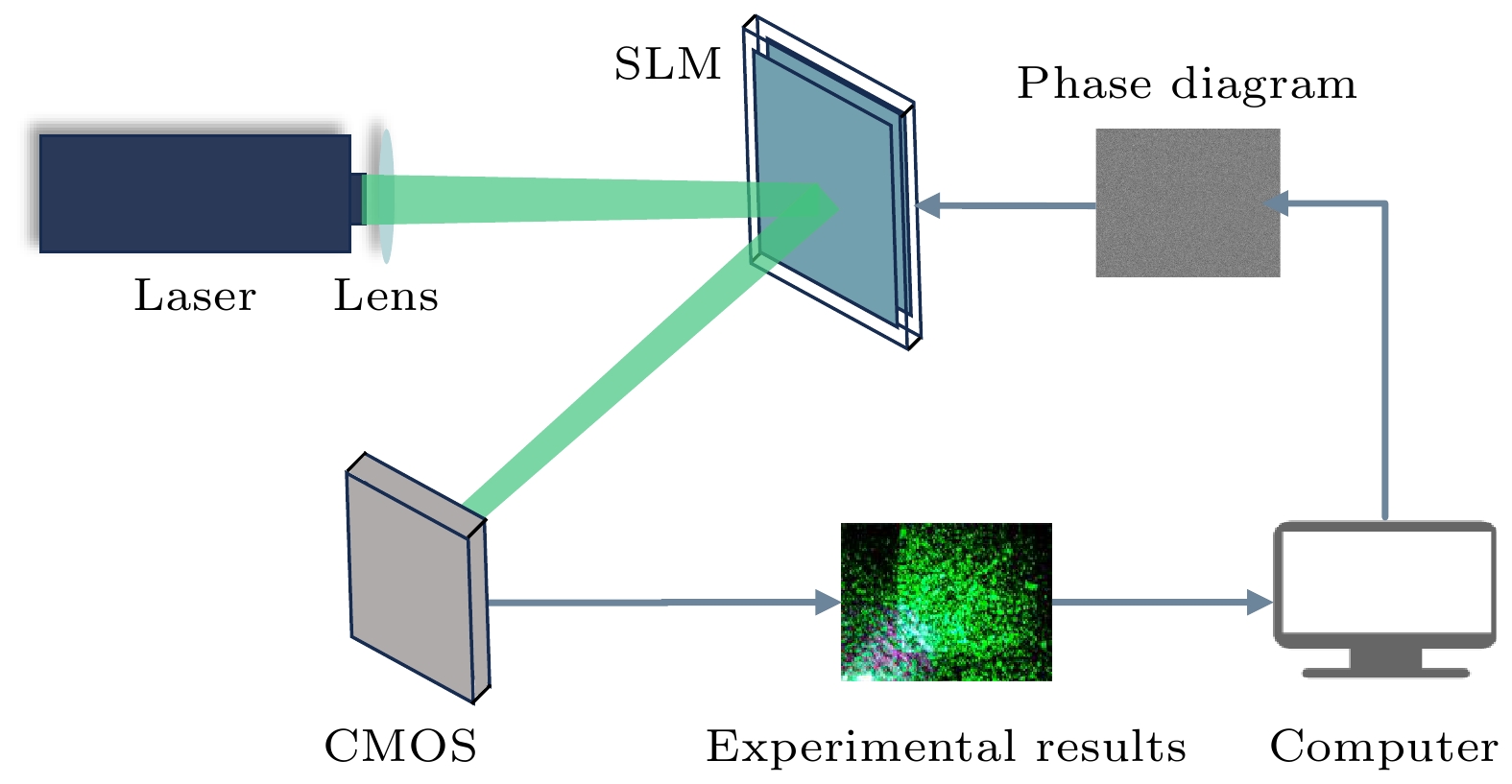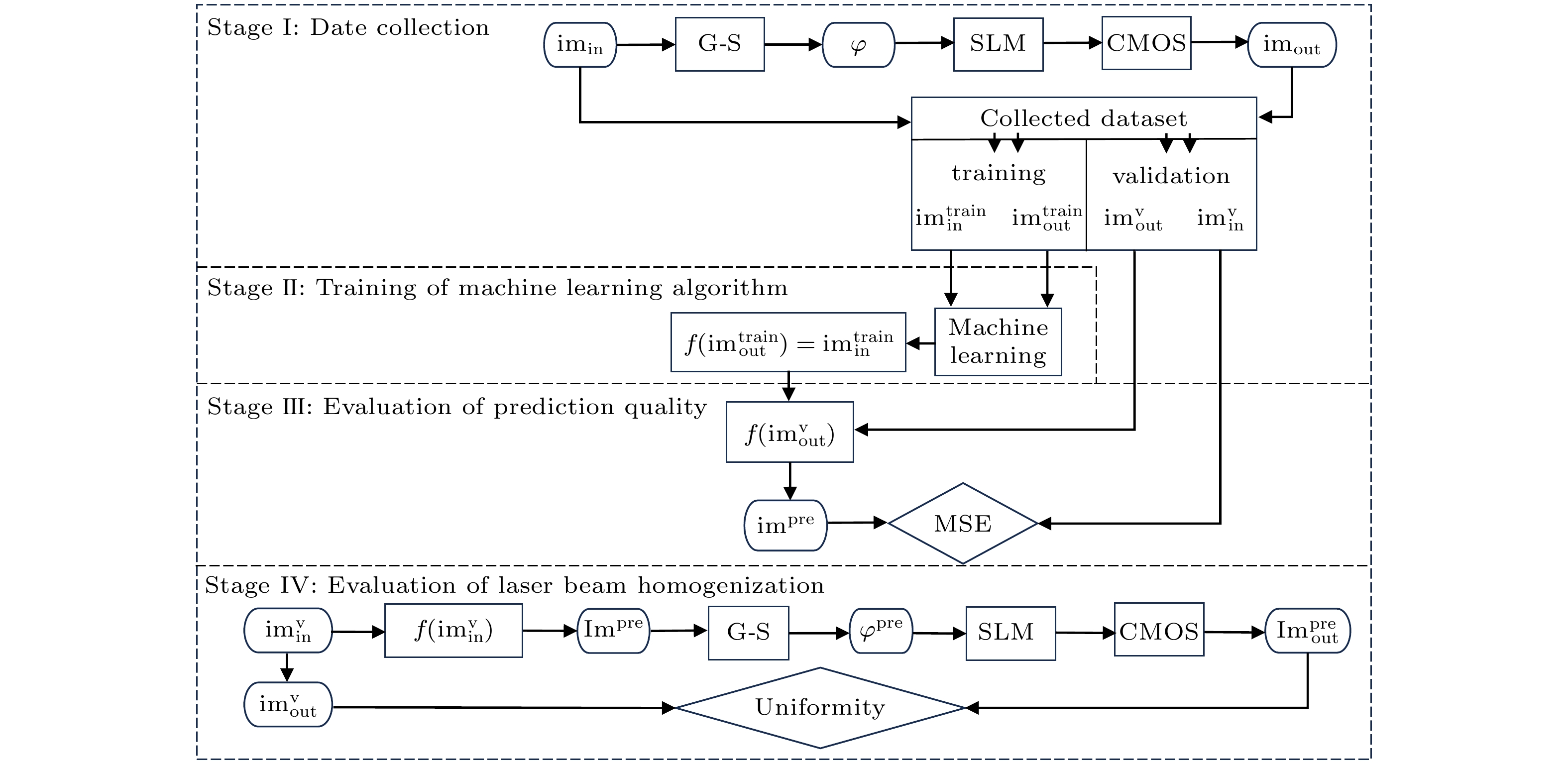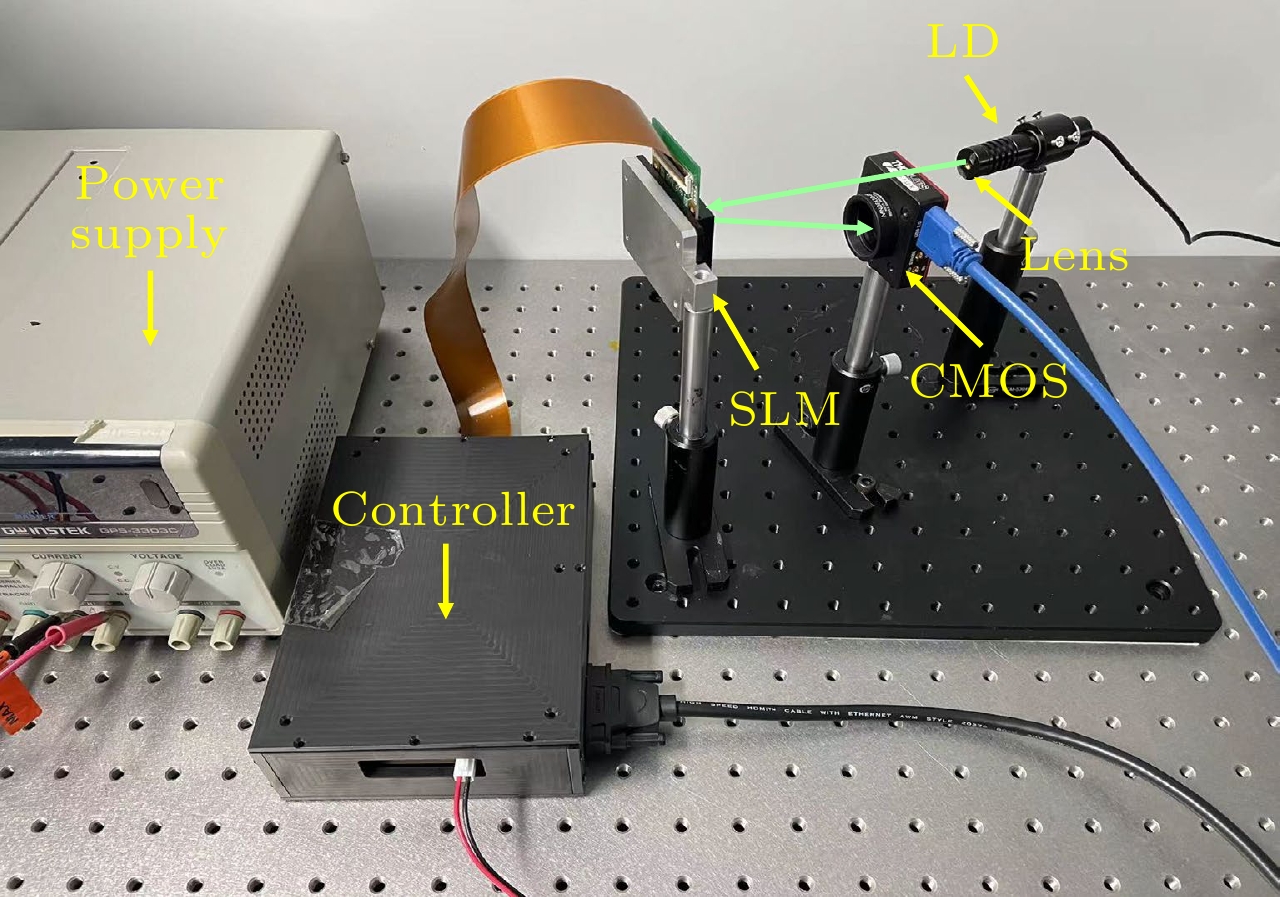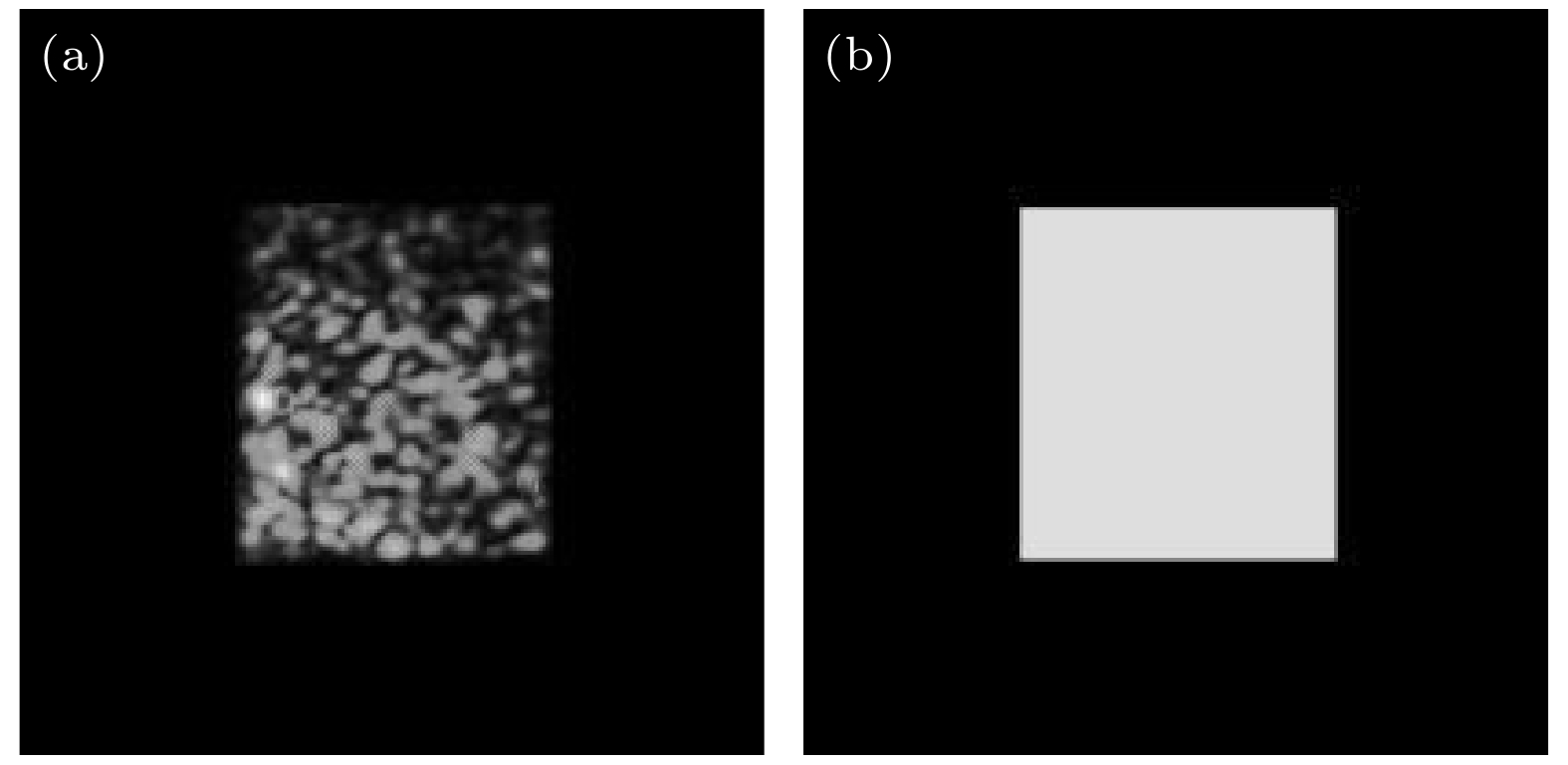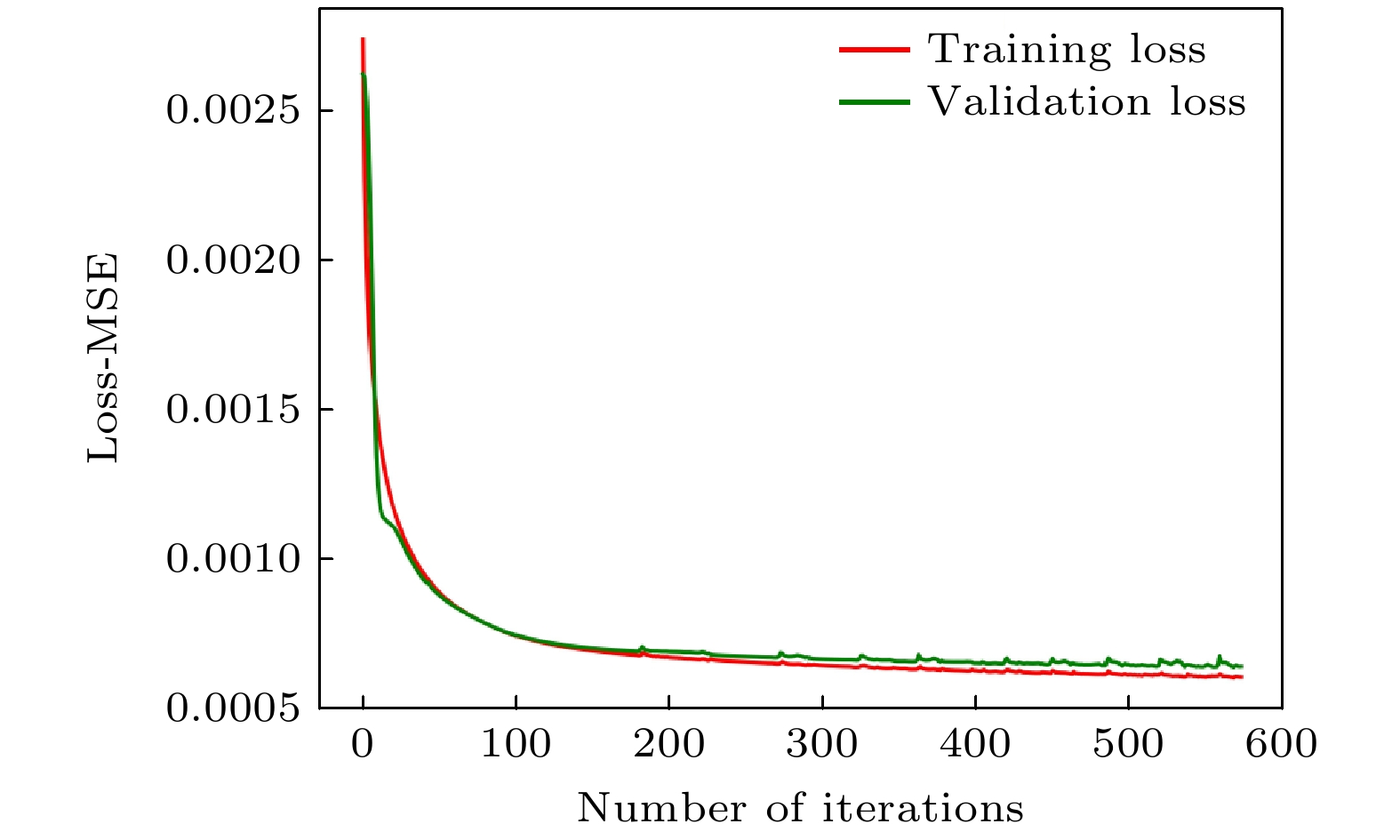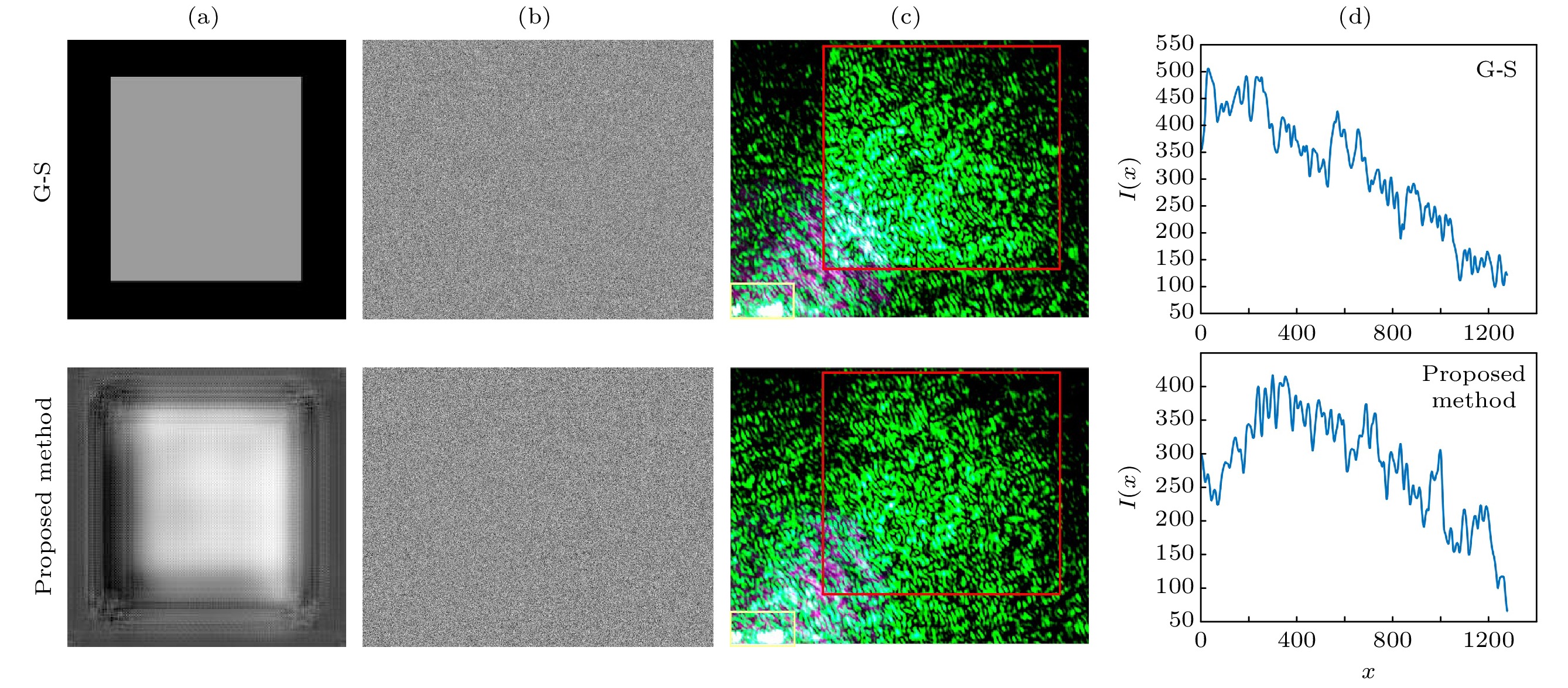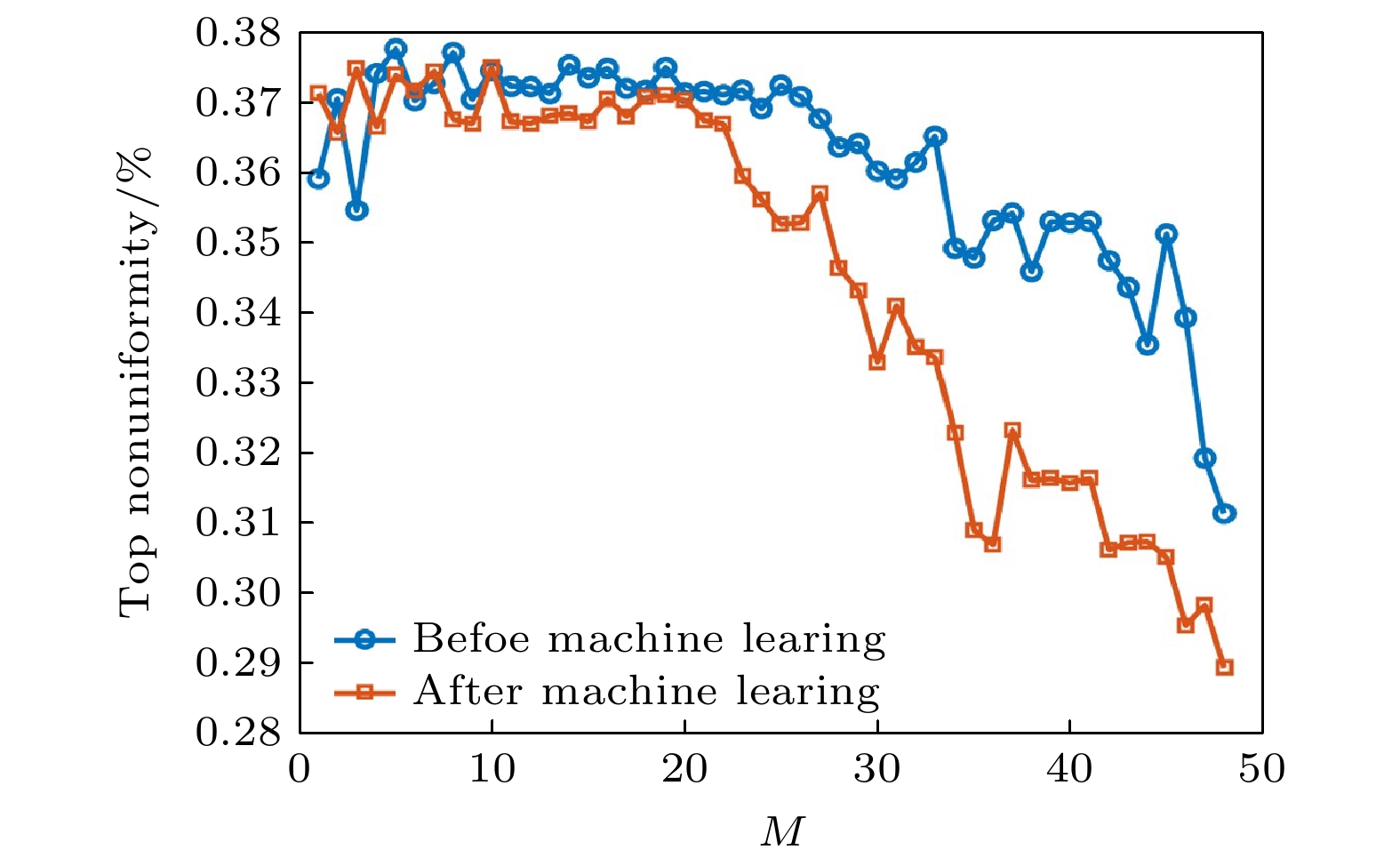-
针对空间光调制器(spatial light modulator, SLM)激光匀光整形方法, 提出了一种基于机器学习的激光匀光整形方法. 激光匀光整形的初步方法采用Gerchberg-Saxton (G-S)算法生成相位全息图, 并使用SLM将入射光调制为均匀光斑, 但SLM的固有匀光误差严重限制光斑均匀性进一步提高. 本文提出的机器学习方法能够实现对匀光误差进行补偿, 从而提高光斑的均匀度. 基于实验数据, 通过监督学习回归任务建立了匀光目标图像和实验探测图像之间的映射关系, 实验验证了对匀光误差进行补偿, 对比传统SLM激光匀光整形方法, 激光匀光不均匀度相对降低了13%, 从而验证了误差补偿机器学习方法实现高均匀度激光匀光整形的可行性与有效性. 本文能够为激光匀光整形方法提供基于机器学习的技术方法参考, 对推动激光加工、光学成像、光镊等激光应用具有重要的技术价值. 同时, 也能够为人工智能解决光学问题提供问题牵引与方法参考.
-
关键词:
- 激光匀光整形 /
- 机器学习 /
- 误差补偿 /
- Gerchberg-Saxton算法
Laser is widely used in various fields such as laser processing, optical imaging, and optical trapping due to its high monochromaticity, directionality, and high energy density. However, the beam generated by the laser is a Gaussian beam with non-uniform distribution of optical energy, and this non-uniform distribution affects the interaction between the laser and the matter. Therefore, it is necessary to reshape the Gaussian beam into homogenized light spots with uniform distribution of optical energy. Laser beam homogenization method aims to change the spatial distribution of the Gaussian beam, precisely controlling the shape and intensity of the laser beam to achieve homogenized light spots. However, the existing laser beam homogenization methods encounter some problems such as complicated component preparation and poor flexibility. They also fail to address experimental errors caused by stray light and zero-order light interference, leading to discrepancies between the experimental results and the expected results. These limitations seriously restrict the widespread application of laser technology in various fields. A laser homogenization method based on machine learning is proposed for spatial light modulator (SLM) laser homogenization in this work. The preliminary approach to laser homogenization is to generate a phase hologram by using the Gerchberg-Saxton (G-S) algorithm and modulate the incident light beam into homogenized light spots by using an SLM. However, the inherent homogenization error of the SLM prevents laser homogenization from improving uniformity. The machine learning method is proposed as a means of compensating for homogenization errors, thereby improving the uniformity of the light spot. The corresponding supervised learning regression task on the experimental dataset establishes mapping relationships between the homogenization target images and the experimental detection images. The results of homogenization error compensation are validated through experiments. Compared with the traditional SLM laser homogenization methods, the proposed method reduces the non-uniformity of the light spot by 13%. The laser homogenization method based on machine learning is an efficient way to achieve laser beam homogenization. The proposed laser beam homogenization method can serve as a reference for machine learning-based method. This method possesses significant technical value for laser applications such as laser processing, optical imaging, and optical manipulation. Furthermore, it can provide guidance and reference for utilizing artificial intelligence in addressing optical problems. -
Keywords:
- laser beam homogenization /
- machine learning /
- error compensation /
- Gerchberg-Saxton algorithm
[1] Xue L, Pang Y, Liu W, Liu L, Pang H, Cao A X, Shi L, Fu Y, Deng Q L 2020 Micromachines 11 338
 Google Scholar
Google Scholar
[2] Yuan W, Xue L, Cao A X, Pang H, Deng Q L 2021 Opt. Express 29 40878
 Google Scholar
Google Scholar
[3] Yuan W, Xu C, Xue L, Pang H, Cao A X, Fu Y, Deng Q L 2021 Micromachines 12 673
 Google Scholar
Google Scholar
[4] Yadav N K, ten Thije Boonkkamp J, Ijzerman W 2019 Opt. Commun. 439 251
 Google Scholar
Google Scholar
[5] Bykov D A, Doskolovich L L, Byzov E V, Bezus E A, Kazanskiy N L 2021 Opt. Express 29 26304
 Google Scholar
Google Scholar
[6] Wei S L, Zhu Z B, Fan Z C, Yan Y M, Ma D L 2019 Opt. Express 27 26757
 Google Scholar
Google Scholar
[7] Yan Y, Fan Z T, Sun G F, Tian K H 2023 Opt. Eng. 62 025103
 Google Scholar
Google Scholar
[8] Su P, Cai C, Song Y, Ma J, Tan Q 2020 Appl. Sci. 10 5485
 Google Scholar
Google Scholar
[9] Wu Y, Wang J, Chen C, Liu C J, Jin F M, Chen N 2021 Opt. Express 29 1412
 Google Scholar
Google Scholar
[10] Guo M, Lü G Q, Cai J H, Wang Z, Feng Q B 2022 Opt. Eng. 61 125103
 Google Scholar
Google Scholar
[11] Chen L Z, Tian S Z, Zhang H, Cao L C, Jin G F 2021 Opt. Express 29 11645
 Google Scholar
Google Scholar
[12] Chen X, Fang X J, Ma D Y, Liu Y, Cao L, Zhai Y Y 2022 Appl. Opt. 61 C55
 Google Scholar
Google Scholar
[13] Chen W C, Yang T, Cheng D W, Wang Y T 2021 Opt. Express 29 27845
 Google Scholar
Google Scholar
[14] Buske P, Völl A, Eisebitt M, Stollenwerk J, Holly C 2022 Opt. Express 30 22798
 Google Scholar
Google Scholar
[15] Sun X H, Mu X Y, Xu C, Pang H, Deng Q L, Zhang K, Jiang H B, Du J L, Yin S Y, Du C L 2022 Opt. Express 30 2646
 Google Scholar
Google Scholar
[16] Liu J S, Taghizadeh M R 2002 Opt. Lett. 27 1463
 Google Scholar
Google Scholar
[17] 周志华 2016 机器学习(北京: 清华大学出版社)第23—26页
Zhou Z H 2016 Micromachin Learning (Beijing: Tsinghua University Press) pp23–26
[18] Li P Z, Zheng Y B, Luo L 2020 J. Coast. Res. 104 255
 Google Scholar
Google Scholar
[19] Jeon W, Jeong W, Son K, Yang H 2018 Opt. Lett. 43 4240
 Google Scholar
Google Scholar
[20] Eybposh M H, Caira N W, Atisa M, Chakravarthula P, Pégard N C 2020 Opt. Express 28 26636
 Google Scholar
Google Scholar
-
-
[1] Xue L, Pang Y, Liu W, Liu L, Pang H, Cao A X, Shi L, Fu Y, Deng Q L 2020 Micromachines 11 338
 Google Scholar
Google Scholar
[2] Yuan W, Xue L, Cao A X, Pang H, Deng Q L 2021 Opt. Express 29 40878
 Google Scholar
Google Scholar
[3] Yuan W, Xu C, Xue L, Pang H, Cao A X, Fu Y, Deng Q L 2021 Micromachines 12 673
 Google Scholar
Google Scholar
[4] Yadav N K, ten Thije Boonkkamp J, Ijzerman W 2019 Opt. Commun. 439 251
 Google Scholar
Google Scholar
[5] Bykov D A, Doskolovich L L, Byzov E V, Bezus E A, Kazanskiy N L 2021 Opt. Express 29 26304
 Google Scholar
Google Scholar
[6] Wei S L, Zhu Z B, Fan Z C, Yan Y M, Ma D L 2019 Opt. Express 27 26757
 Google Scholar
Google Scholar
[7] Yan Y, Fan Z T, Sun G F, Tian K H 2023 Opt. Eng. 62 025103
 Google Scholar
Google Scholar
[8] Su P, Cai C, Song Y, Ma J, Tan Q 2020 Appl. Sci. 10 5485
 Google Scholar
Google Scholar
[9] Wu Y, Wang J, Chen C, Liu C J, Jin F M, Chen N 2021 Opt. Express 29 1412
 Google Scholar
Google Scholar
[10] Guo M, Lü G Q, Cai J H, Wang Z, Feng Q B 2022 Opt. Eng. 61 125103
 Google Scholar
Google Scholar
[11] Chen L Z, Tian S Z, Zhang H, Cao L C, Jin G F 2021 Opt. Express 29 11645
 Google Scholar
Google Scholar
[12] Chen X, Fang X J, Ma D Y, Liu Y, Cao L, Zhai Y Y 2022 Appl. Opt. 61 C55
 Google Scholar
Google Scholar
[13] Chen W C, Yang T, Cheng D W, Wang Y T 2021 Opt. Express 29 27845
 Google Scholar
Google Scholar
[14] Buske P, Völl A, Eisebitt M, Stollenwerk J, Holly C 2022 Opt. Express 30 22798
 Google Scholar
Google Scholar
[15] Sun X H, Mu X Y, Xu C, Pang H, Deng Q L, Zhang K, Jiang H B, Du J L, Yin S Y, Du C L 2022 Opt. Express 30 2646
 Google Scholar
Google Scholar
[16] Liu J S, Taghizadeh M R 2002 Opt. Lett. 27 1463
 Google Scholar
Google Scholar
[17] 周志华 2016 机器学习(北京: 清华大学出版社)第23—26页
Zhou Z H 2016 Micromachin Learning (Beijing: Tsinghua University Press) pp23–26
[18] Li P Z, Zheng Y B, Luo L 2020 J. Coast. Res. 104 255
 Google Scholar
Google Scholar
[19] Jeon W, Jeong W, Son K, Yang H 2018 Opt. Lett. 43 4240
 Google Scholar
Google Scholar
[20] Eybposh M H, Caira N W, Atisa M, Chakravarthula P, Pégard N C 2020 Opt. Express 28 26636
 Google Scholar
Google Scholar
计量
- 文章访问数: 3536
- PDF下载量: 108
- 被引次数: 0














 下载:
下载:
